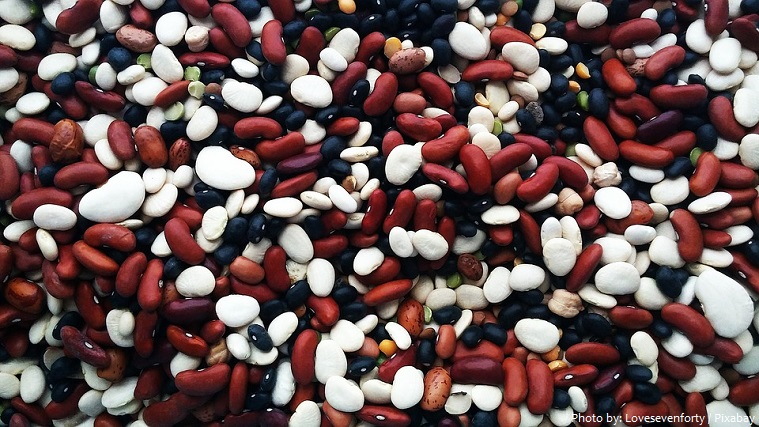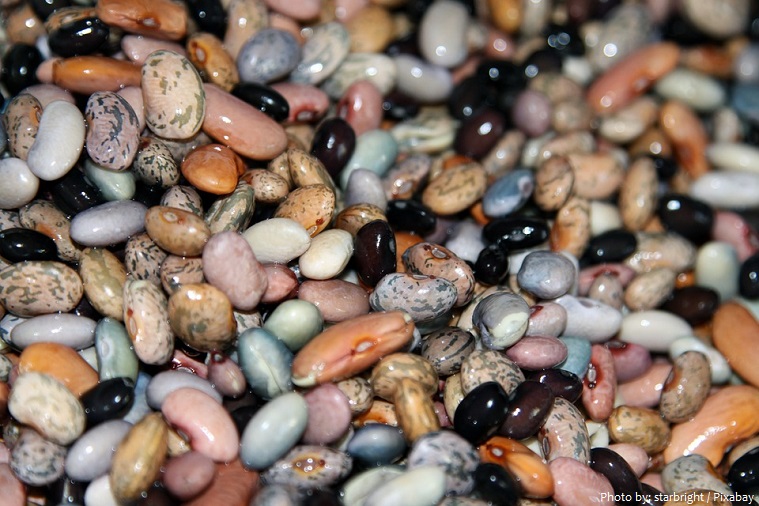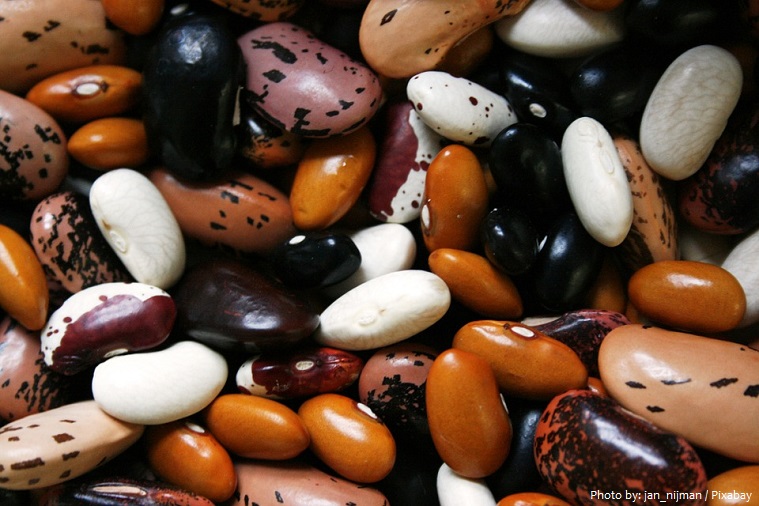Bean is an edible seed, typically kidney-shaped, growing in long pods on certain leguminous plants.
The various species of bean plants include some of the very first plants cultivated by people in both the Old and the New Worlds.
There is evidence of peas that has been carbon dated back to 9,750 BC, found by archaeologists Thailand. Evidence also exists that suggests, that native people of Mexico and Peru were cultivating bean crops as far back as 7,000 BC.
Beans were also found in the tombs of the kings of the ancient Egypt where they were left as the food for the departed and their souls in the afterlife.
The first cultivated beans appeared 4,000 years ago in the Aegean, Iberia, and transalpine Europe and they were large-seeded broad beans.
When the first colonists arrived at the New World, Native Americans taught them to grow beans with corn so the bean plants can climb the cornstalks.
The word “Bean” originally meant the seed of the broad bean, but was later broadened to include members of the genus Phaseolus such as the common bean and the runner bean, and the related genus Vigna. The term is now applied in a general way to many other related plants, such as soybeans, peas, lentils, vetches, and lupines.
Currently, the world genebanks hold about 40,000 bean varieties, although only a fraction are mass-produced for regular consumption.
Time for planting beans is between late spring and end of the summer. Maturity is typically 55 to 60 days from planting to harvest
Most varieties of bean grow either as an erect bush or as a climbing plant, but a few important kinds are of intermediate form.
Varieties differ greatly in size, shape, color, and tenderness of the immature pods. In general, varieties grown for dry mature seeds produce pods that are too fibrous to be eaten at any state of development.
Most edible-podded beans produce relatively low yields of mature seeds, or seeds that are of low eating quality. Seed colors range from white through green, yellow, tan, pink, red, brown, and purple to black in solid colors and countless contrasting patterns.
Seed shapes range from nearly spherical to flattened, elongated, and kidney-shaped. Pods are of various shades of green, yellow, red, and purple and splashed with red or purple; pod shapes range from flat to round, smooth to irregular, and straight to sharply curved; length ranges from 7,5 to 20 centimeters (3 to 8 inches) or more.
Beans are very good source of fibers, protein, vitamins, complex carbohydrates, folate, and iron but some of them, like red and white kidney beans, also have toxins while they are raw.
They have lectin phytohaemagglutinin which can cause poisoning with symptoms of nausea, vomiting, and diarrhea from as little as five raw beans. This toxin can be removed by boiling the beans for at least 30 minutes at 100°C. If the beans are cooked in slow cooker (80°C for a longer time) danger of poisoning can be increased five times and this method of preparation of beans is not recommended.
The soybean (Glycine max) is the most economically important bean in the world, providing vegetable protein for millions of people and ingredients for hundreds of chemical products.
The common bean (Phaseolus vulgaris) is second to the soybean in importance and is of Central and South American origin.
The bonavist bean or hyacinth bean is a common garden ornamental. It is a large tropical climbing plant.
Soaking dried beans for a couple of hours brings them back to life, activating enzymes, proteins, minerals and vitamins; and they are better for cooking than.





